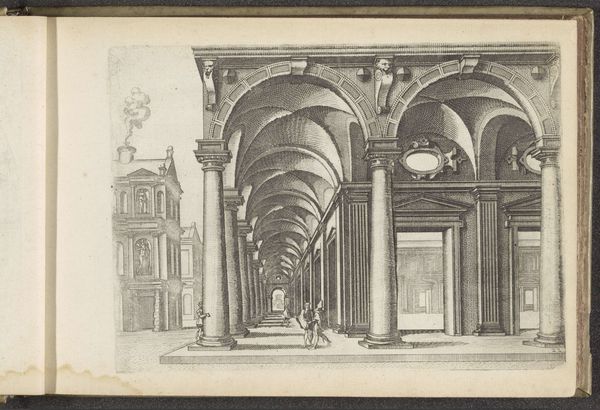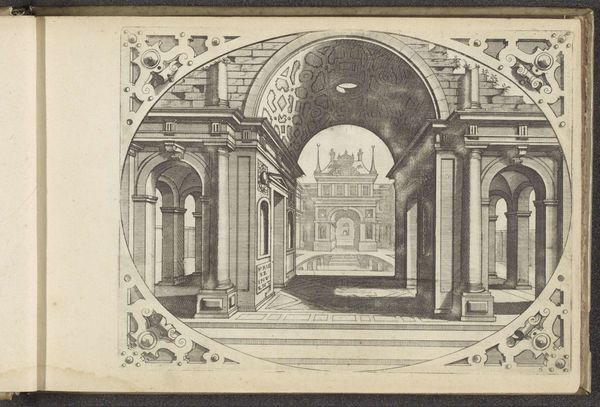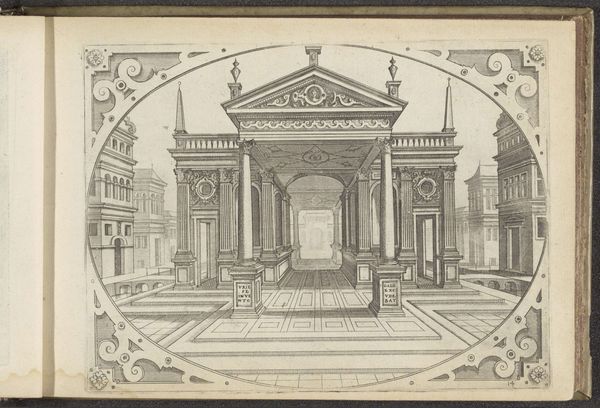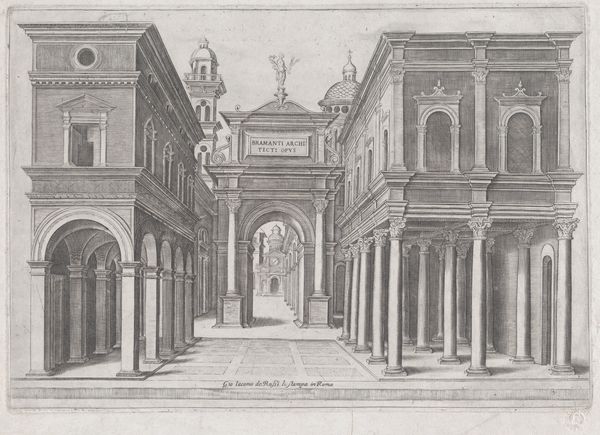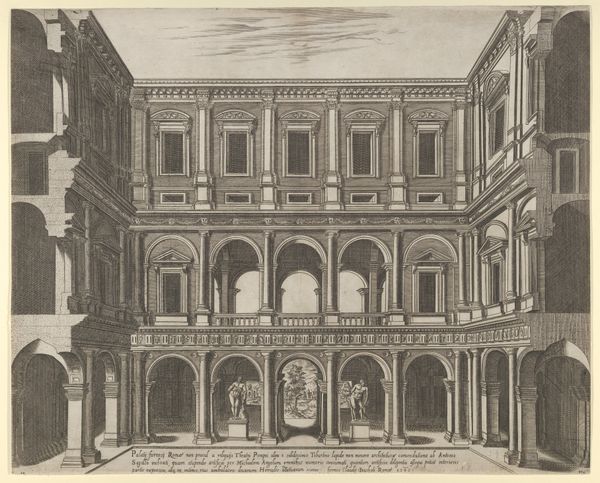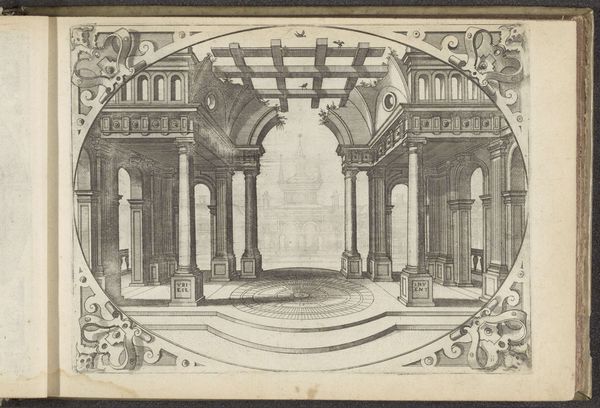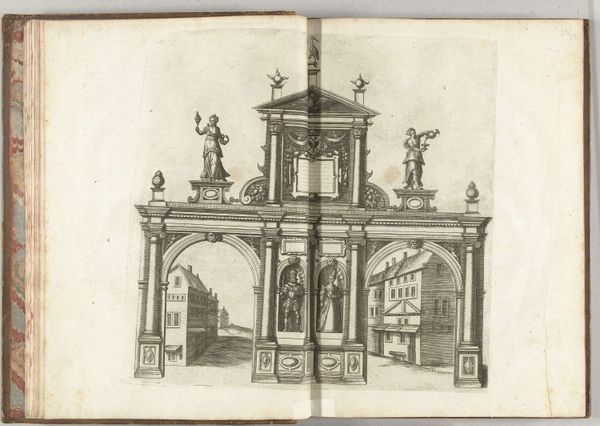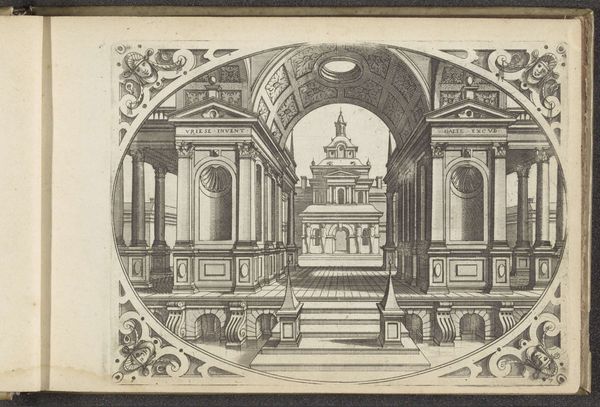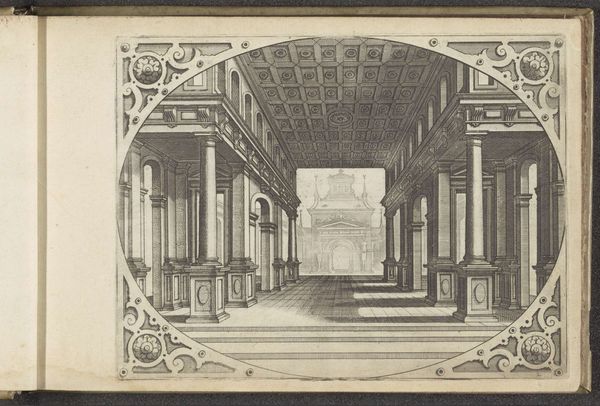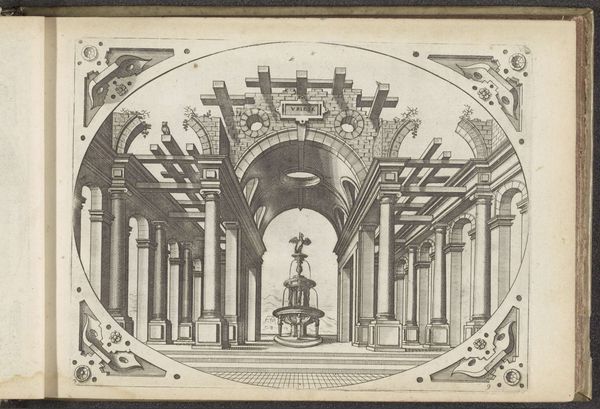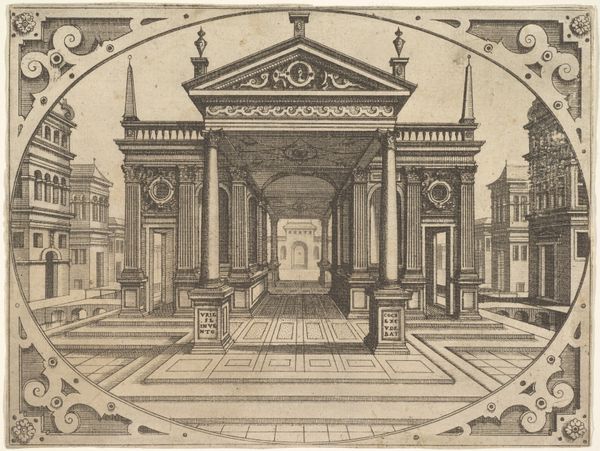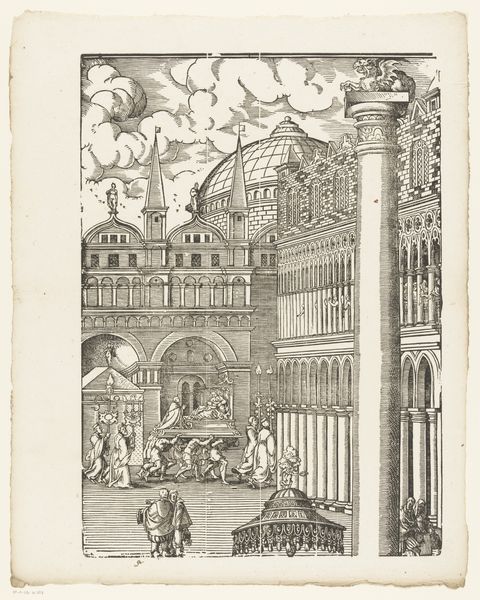
print, engraving, architecture
#
baroque
# print
#
form
#
line
#
cityscape
#
engraving
#
architecture
Dimensions: height 196 mm, width 247 mm
Copyright: Rijks Museum: Open Domain
Curator: Here we have "Zuil van de Composiete orde en gebouw met zuilen," or "Column of the Composite Order and Building with Columns," an engraving by Hendrick Hondius I, dating from between 1606 and 1620. Editor: The detail is really striking, but the whole composition feels… sterile, almost like a stage set devoid of any actors. It gives off a lonely air. Curator: It’s an architectural print, more about the precise rendering of form than evoking atmosphere. Look closely at the lines, though—the engraving technique itself becomes a celebration of craftsmanship. The lines create volume, texture; they become almost tactile. What was the material reality involved in this era, though? The tools that were used… Editor: The choice to showcase a Composite column, the most ornate of the classical orders, feels deeply telling. It speaks to the aspirations of the elite at the time, their desire to connect to a classical past but also to display power through ostentatious design. But it’s more than aspiration; consider the accessibility, then, of the architectural forms replicated here. Curator: Precisely. It serves as a manual as much as an image. Consider also the relationship between the column, standing isolated on the left, and its context, a fragment of a larger structure on the right. One highlights the making, the single composite and how its decoration relates to functionality. How it works within something! The artist shows a distinct level of labor and process behind it all, as you can notice through the starkly different sections on each side of the print. Editor: I see the interplay of power dynamics echoed there. This almost clinical breakdown suggests how the architectural styles normalized then continue to perpetuate and materialize those dynamics into a legacy now; how a composite comes to dictate the spaces in which we circulate even today. It certainly speaks volumes of social construction of spaces and objects. Curator: And yet, consider this print itself as a crafted object. The lines, the ink, the paper – all worked to create and convey ideas. To me, its legacy sits most potently with a demonstration of labour itself and how that comes together. Editor: Yes, it all makes you contemplate these things more. Thanks! Curator: Of course!
Comments
No comments
Be the first to comment and join the conversation on the ultimate creative platform.
